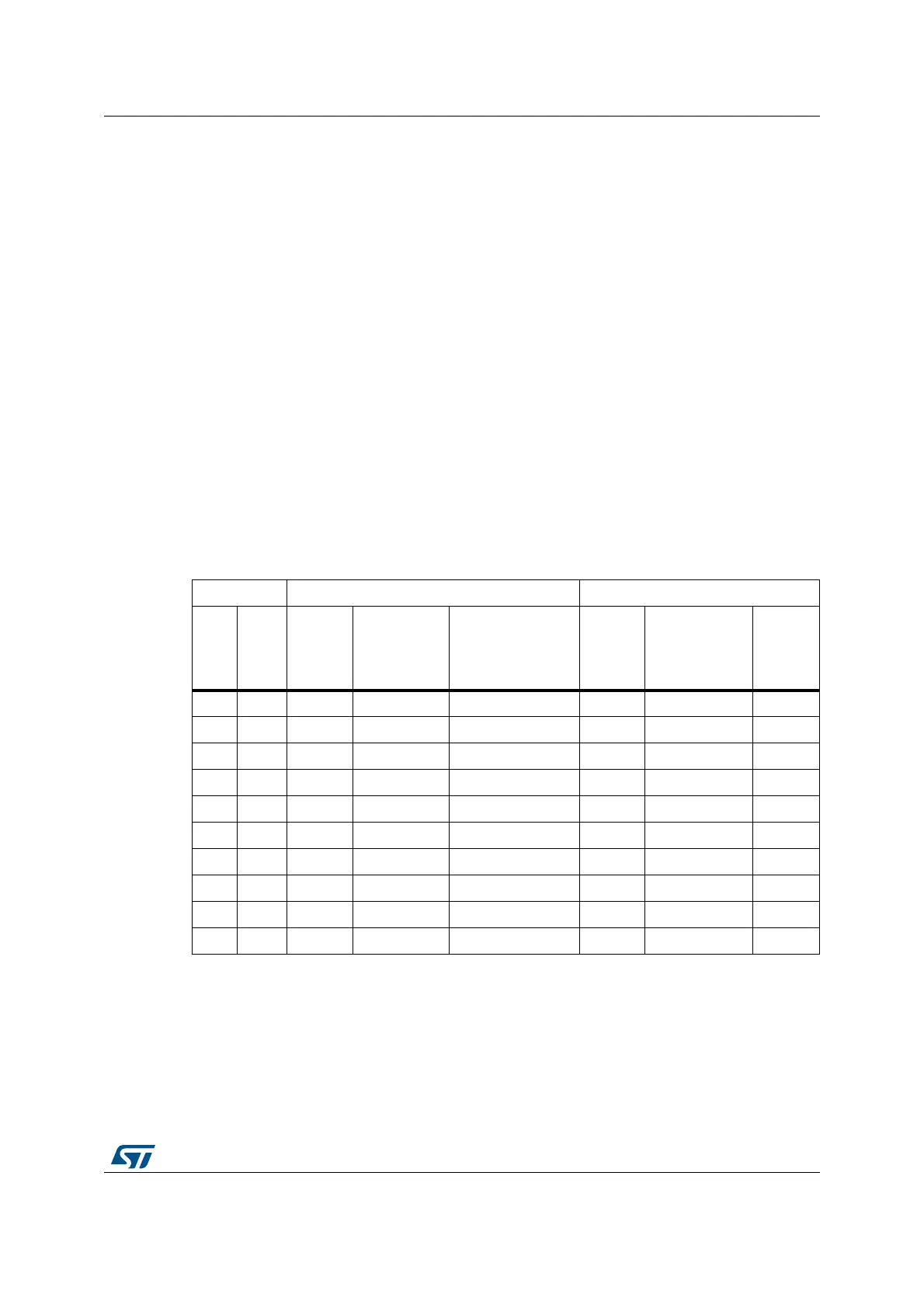DocID13902 Rev 15 792/1128
RM0008 Universal synchronous asynchronous receiver transmitter (USART)
820
Example 2:
To program USARTDIV = 0d25.62
This leads to:
DIV_Fraction = 16*0d0.62 = 0d9.92
The nearest real number is 0d10 = 0xA
DIV_Mantissa = mantissa (0d25.620) = 0d25 = 0x19
Then, USART_BRR = 0x19A hence USARTDIV = 0d25.625
Example 3:
To program USARTDIV = 0d50.99
This leads to:
DIV_Fraction = 16*0d0.99 = 0d15.84
The nearest real number is 0d16 = 0x10 => overflow of DIV_frac[3:0] => carry must be
added up to the mantissa
DIV_Mantissa = mantissa (0d50.990 + carry) = 0d51 = 0x33
Then, USART_BRR = 0x330 hence USARTDIV = 0d51.000
Note: The lower the CPU clock the lower will be the accuracy for a particular Baud rate. The upper
limit of the achievable baud rate can be fixed with this data.
Only USART1 is clocked with PCLK2 (72 MHz Max). Other USARTs are clocked with
PCLK1 (36 MHz Max).
Table 192. Error calculation for programmed baud rates
Baud rate f
PCLK
= 36 MHz f
PCLK
= 72 MHz
S.No
in
Kbps
Actual
Value
programmed
in the Baud
Rate register
% Error
=(Calculated -
Desired)B.Rate
/Desired B.Rate
Actual
Value
programmed
in the Baud
Rate register
% Error
1. 2.4 2.400 937.5 0% 2.4 1875 0%
2. 9.6 9.600 234.375 0% 9.6 468.75 0%
3. 19.2 19.2 117.1875 0% 19.2 234.375 0%
4. 57.6 57.6 39.0625 0% 57.6 78.125 0.%
5. 115.2 115.384 19.5 0.15% 115.2 39.0625 0%
6. 230.4 230.769 9.75 0.16% 230.769 19.5 0.16%
7. 460.8 461.538 4.875 0.16% 461.538 9.75 0.16%
8. 921.6 923.076 2.4375 0.16% 923.076 4.875 0.16%
9. 2250 2250 1 0% 2250 2 0%
10. 4500 NA NA NA 4500 1 0%

